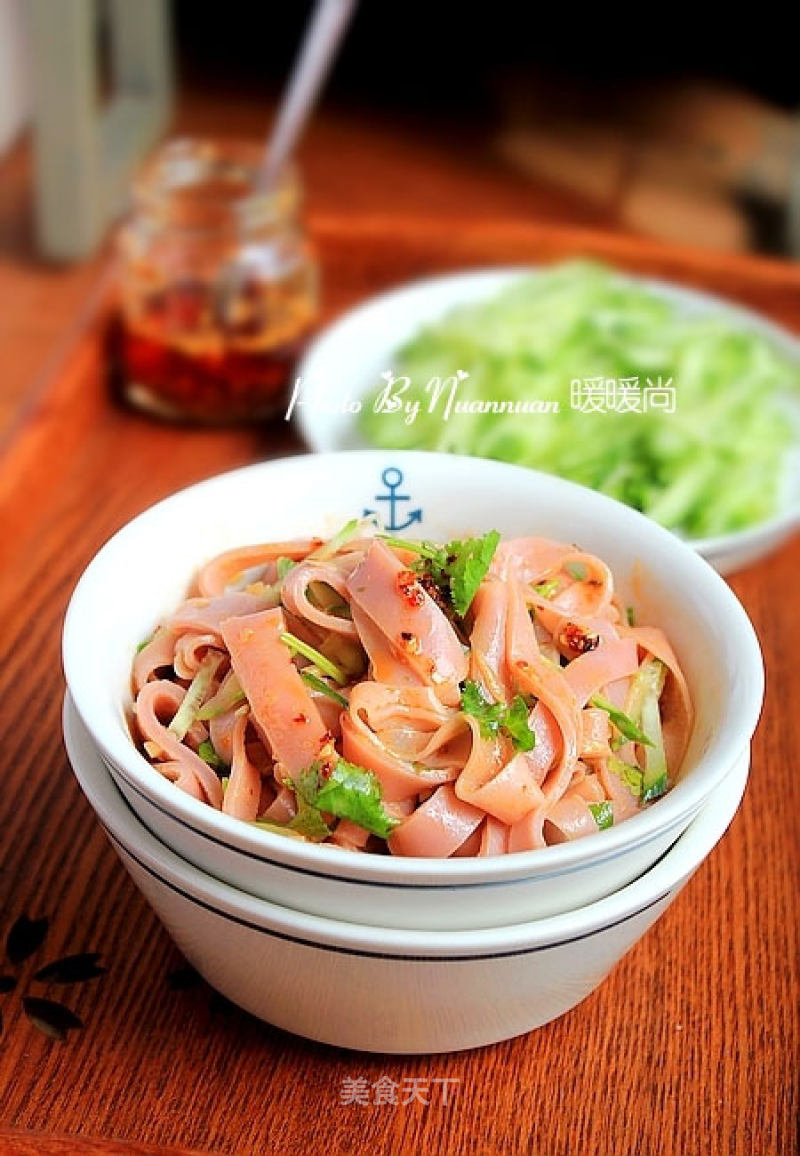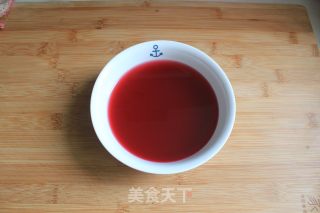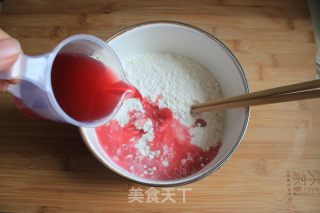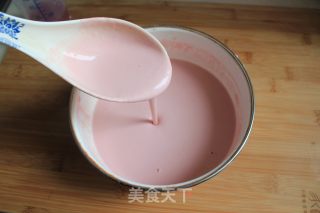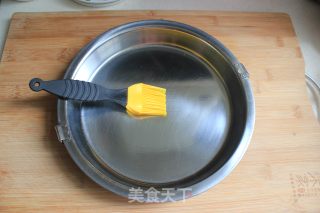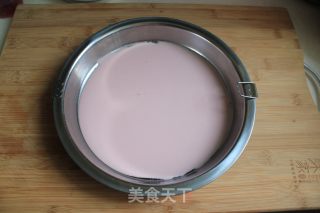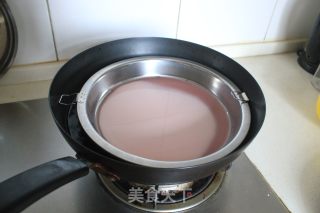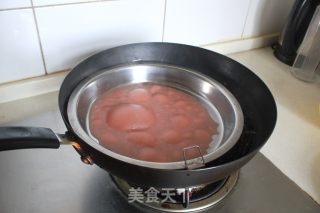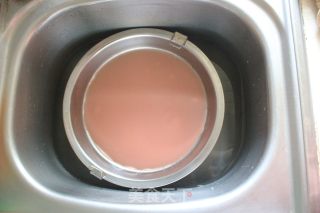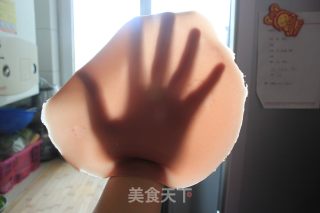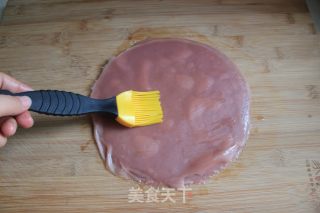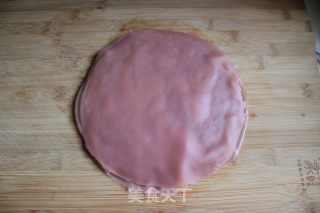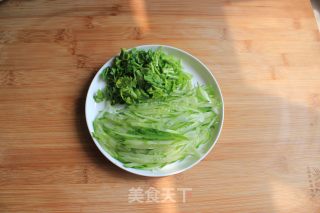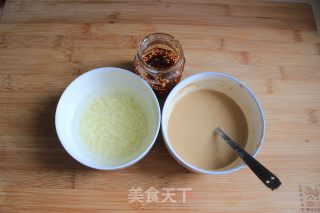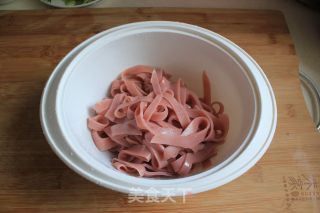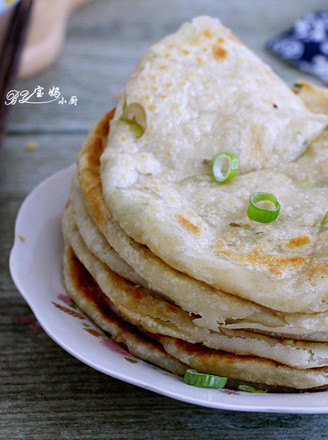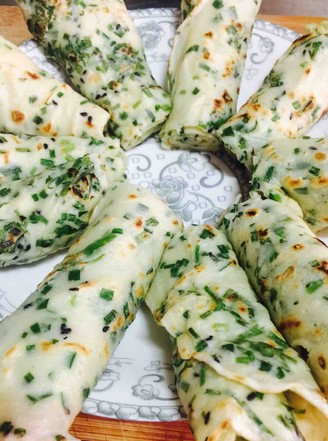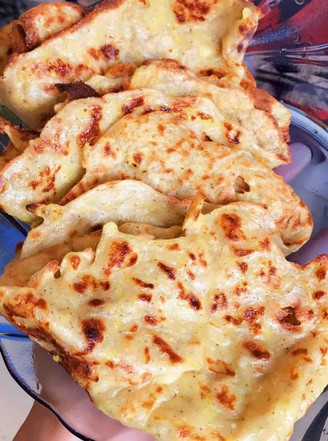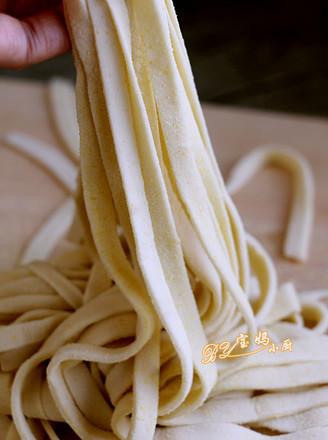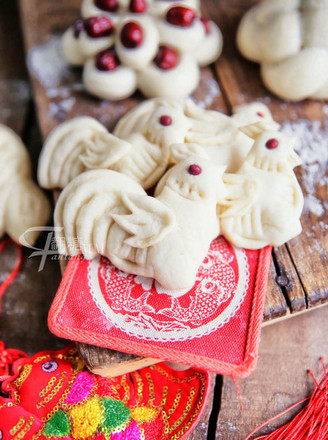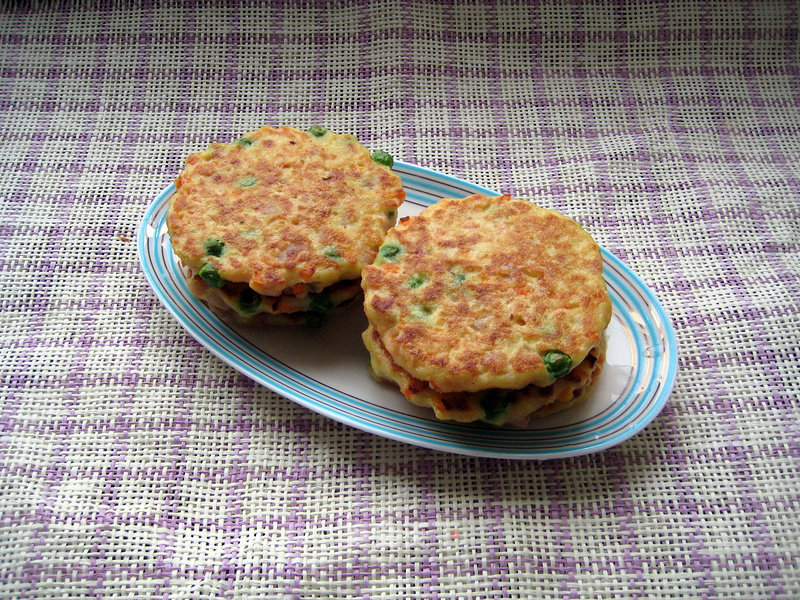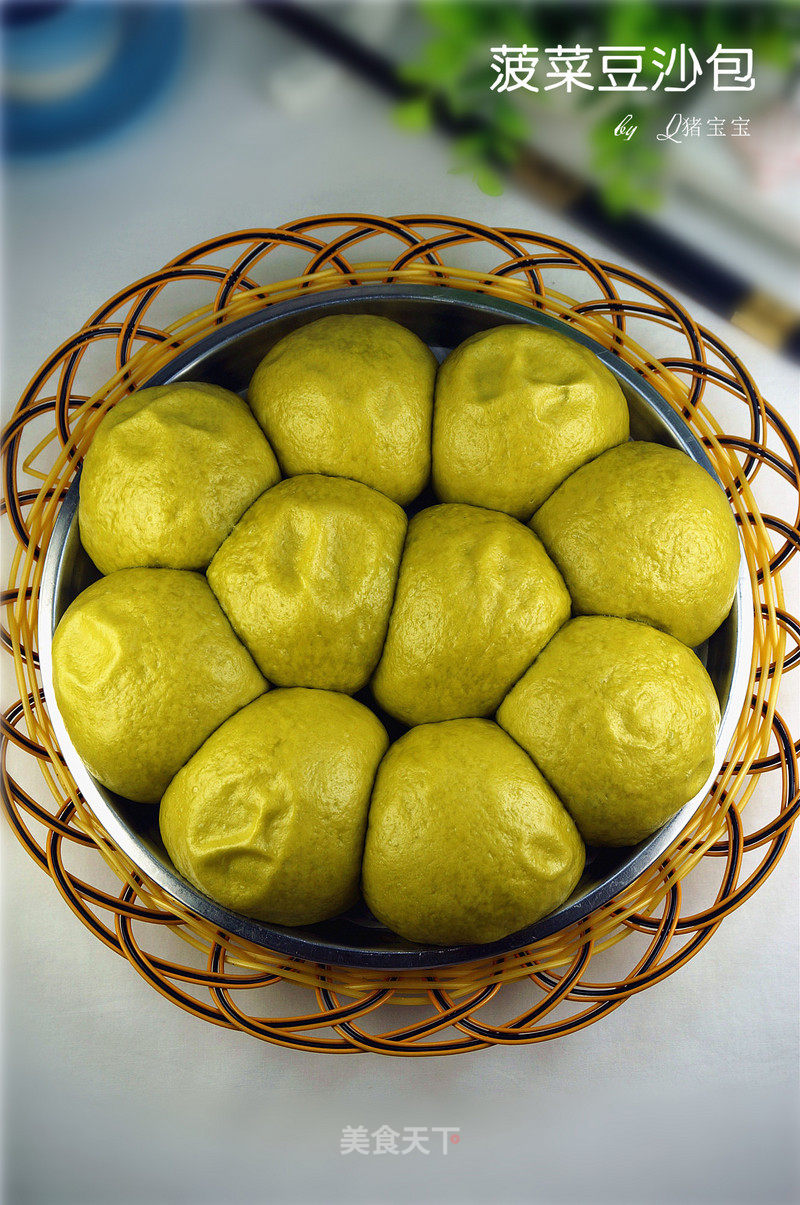Easy to Make Amaranth Juice Pink Cold Skin without Washing The Face
1.
Wash the amaranth, put it in a saucepan, add about 300g of water, and boil for about 5 minutes. Cook until the amaranth becomes soft and the soup turns red, then turn off the heat.
2.
Filter the boiled amaranth juice and let it cool for later use.
3.
Find a larger container, put the sifted rich flour, pour in the amaranth juice while stirring. Do not add the amaranth juice at one time. Add slowly depending on the consistency of the batter. I used about 280g of amaranth juice for 200g of flour. .
4.
The adjusted batter will drop straight and at a constant speed when it drops down. The speed will not be very fast or particularly slow. This means that the consistency of the batter is just right. Let it stand for an hour and a half. (If the batter is too thick, it will not be cooked well, and if it is too thin, it will not be chewy.)
5.
Prepare two flat-bottomed stainless steel plates (cold pirolo), and brush a thin layer of olive oil on each plate (you can use cooked cooking oil instead).
6.
Spoon a spoonful of batter and place it on a stainless steel plate. The amount of batter should cover the entire bottom of the plate.
7.
Then put the stainless steel plate into a pot of boiling water.
8.
Cover the lid and steam for about 2-3 minutes. When the surface of the Liangpi bubbling up, it means it has been steamed.
9.
Put the steamed cold belt dishes in the cold water basin together, and let the cold skins cool down for a while.
10.
The cold skin can be removed from the plate after it has cooled slightly. The steamed cold skin is translucent and very tough.
11.
Coat each piece of steamed cold skin with olive oil to prevent the cold skin from sticking to each other.
12.
Repeat steps 5-11 until all the cold skin is steamed.
13.
Wash cucumbers and cut into shreds. Wash coriander and cut into sections.
14.
Peel the garlic and chop into minced pieces, add a little salt, and brew with boiling water. The sesame sauce is prepared with warm water, chili oil (for the recipe), salt, and vinegar.
15.
Cut the steamed cold skin into strips as you like.
16.
Take a large container, add the cold skin, cucumber shreds, and coriander, add the prepared seasonings according to your taste, and mix thoroughly before serving.


Tips:
1. It is best to use high-gluten flour for flour. The cold skin made with higher gluten is more gluten, and ordinary gluten will be worse.
2. Why does the plate float on the water and steam it? Because if you use a cage or steaming grid, there is no guarantee that the plate is absolutely horizontal, so it may be thin on one side and thick on the other. But when placed on the water, the water remains level no matter how the pot is placed, so that the steamed dough will maintain the same thickness.
3. When steaming, be sure to cover the pot. If the steam escapes, the dough must be dry and cracked and can't be peeled off. This is the first time I failed.
4. Liangpi cannot be stored in the refrigerator. Basically, the coldpi will become brittle and hard after overnight in the refrigerator, with no toughness and taste. It is better to do it on the same day and finish eating on the same day. I used 200g of flour to make 7 sheets of Liangpi with a diameter of 21cm, which is equivalent to 2 semi-coolpis bought in the market.

